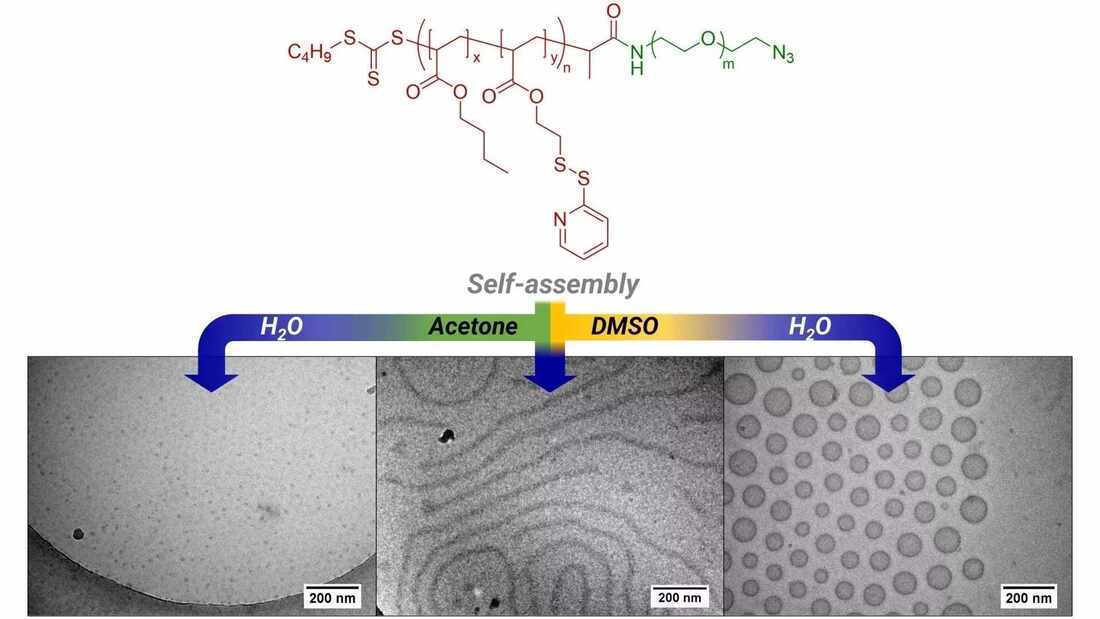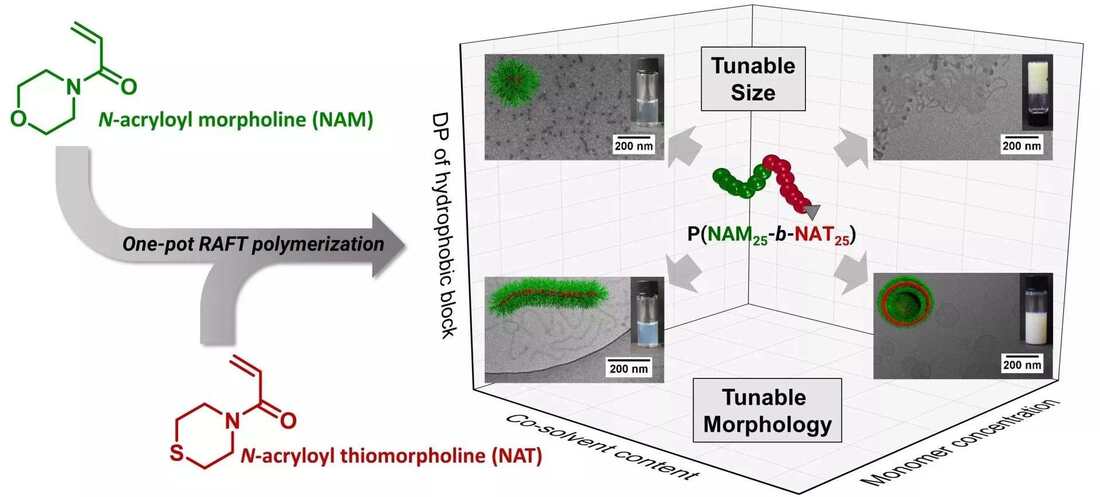Self-assembly of polymers
Preparation of various nanostructures from (block) copolymers or by means of controlled polymerisation processes
Kinetic structure control in block copolymer self-assembly

Schematic depiction of the self-assembly of block copolymer into spheres, worms, vesicles (Illustration: Johannes C. Brendel)
Self-assembly of block copolymers in selective solvents is a versatile method to form polymeric nanostructures of different size, shape and functionality. Kinetic aspects of the self-assembly process are often neglected, while the focus remains mostly on thermodynamic parameters or the variation of block lengths. However, kinetically inhibited structures are easily formed in aqueous environments and the thermodynamic equilibrium may never be reached. We are therefore investigating the influence of different parameters (e.g. solvent, concentration, addition rate, etc.) on the morphology formation during the assembly of block copolymers. As an example, spherical and worm-like micelles, as well as polymer vesicles can be produced from identical block copolymers by manipulating the assembly conditions.
Nanostructuring by polymerization-induced self-assembly (PISA)

PISA phase diagram (Illustration: Johannes C. Brendel)
During polymerization-induced self-assembly (PISA), the polymerization of an insoluble block simultaneously leads to the formation of self-assembled nanostructures. Consequently, block copolymer nanostructures are created in situ and the obtained morphologies range from micelles to vesicles. We mainly focus on RAFT dispersion polymerization in aqueous media, for example of N-acryloylthiomorpholines (NAT), or other water-soluble monomers that form hydrophobic polymers. Our analysis includes kinetical properties as well as the development of different morphologies. The reactions are usually carried out as "one-pot" syntheses, in which both blocks are polymerized sequentially in the same reaction without the need for complex intermediate purification. We have already obtained a large variety of nanostructures or morphologies applying different polymerization parameters and can develop entire phase diagrams from the observed correlations. The access to a plethora of nanostructures, the high concentrations, and the possibility to encapsulate both hydrophobic and hydrophilic substances already during polymerization promise great potential, in particular for biomedical applications.

